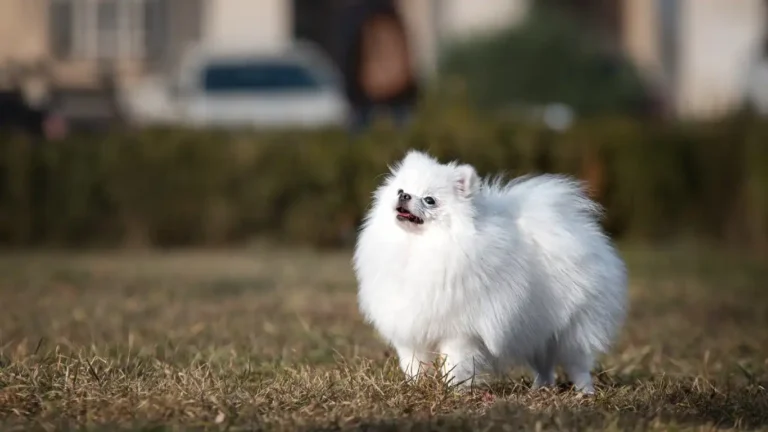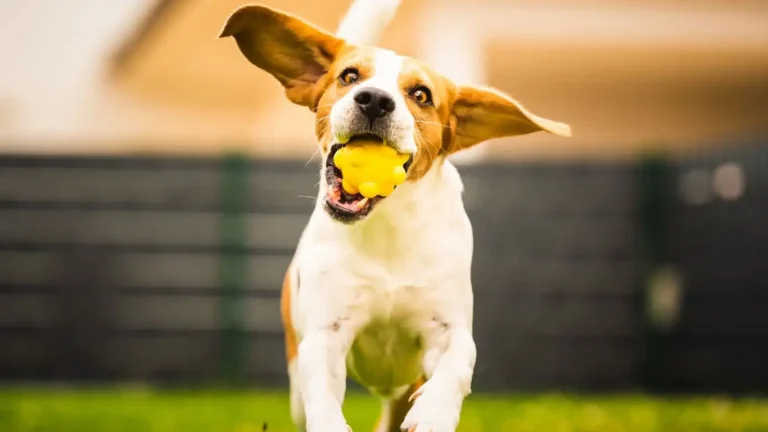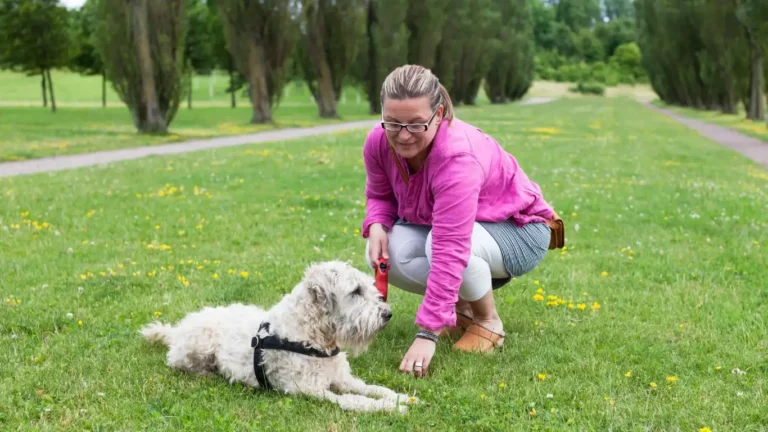How to Teach a Dog Not to Beg for Food: Expert Training Tips
As a Veterinary Technician with a specialization in nutrition, I’ve encountered all sorts of behaviors in dogs, but one of the most common issues pet owners ask about is how to teach a dog not to beg for food. We’ve all been there—sitting down to enjoy a meal, only to have our furry friend staring at us with those big, pleading eyes, waiting for a bite. While it’s hard to resist those cute faces, it’s important to set boundaries and teach our dogs proper table manners. In this article, we’ll explore effective strategies to stop your dog from begging for food, so both you and your pet can enjoy mealtimes without the distraction. Let’s dive right in!
Why Do Dogs Beg for Food?

Before we dive into the “how,” it’s essential to understand the “why.” Dogs are naturally opportunistic creatures. When they beg for food, they’re doing it because they’ve learned that it can result in a tasty reward. For some dogs, the behavior is a learned habit, and for others, it might stem from instincts related to survival or simply because they love food! I’ve seen it happen in my own home—my dog, a beagle, has the most soulful eyes, and if he thinks I’m eating something delicious, he’ll do anything to get a taste. However, over time, I realized that his begging was more than just cute; it was becoming disruptive, and it was time to change the pattern.
Understanding the motivation behind this behavior is the first step in teaching your dog not to beg for food. Dogs learn through repetition, and if begging has led to even a small reward in the past, they’ll continue to do it. The key is consistency, patience, and a little bit of understanding. So, let’s break it down.
Setting Boundaries: The First Step to Stopping the Begging

The first and most crucial step in curbing begging behavior is establishing clear boundaries. You need to communicate to your dog that begging for food won’t result in a reward, and that there are better ways to get attention or affection. Here’s where consistency becomes vital. If you let your dog beg for food one day and then ignore it the next, you’re sending mixed signals that will only confuse them. Trust me—I’ve learned this the hard way. Consistency is the name of the game.
Make Mealtimes Calm and Predictable
One of the best ways to discourage begging is to set a routine around mealtime. Dogs thrive on predictability, so establishing a routine where your dog knows when it’s time for their own meal and when it’s time for you to eat can help immensely. For instance, feed your dog their dinner before you sit down to eat. When dogs are already satisfied with their meal, they’re much less likely to be interested in yours. If your dog sees you preparing their food, they’ll quickly associate the action with their own upcoming meal, making it less likely they’ll beg for yours.
Designate a “Begging-Free Zone”
Another great strategy is to designate a specific area for your dog to relax during mealtime. I’ve found that training my dog to stay on his bed or in his crate while I’m eating has helped immensely. It’s not about punishing them; it’s about creating a space where they can feel comfortable and calm while not being a distraction. This also helps prevent them from roaming around the table, trying to catch a crumb here and there. At first, it might take some patience—lots of treats and encouragement—but after a few weeks of consistent training, my dog learned to relax in his spot during dinner time.
How to Train Your Dog Not to Beg for Food

Now comes the fun part—training! To teach your dog not to beg for food, you’ll need to break the cycle of reinforcement. This means no more feeding them from the table or giving in when they stare up at you with those eyes. While it might feel cruel in the moment, I promise you, it’s for their own good in the long run. In my experience, rewarding your dog for good behavior works far better than punishing them for bad behavior.
Use Positive Reinforcement
Positive reinforcement is one of the most effective ways to train a dog. Instead of focusing on the begging behavior, reinforce the opposite behavior—sitting calmly or lying down during mealtime. When your dog stays in their designated spot without begging, reward them with a treat or praise. Over time, they’ll associate being calm with a positive outcome, and the begging behavior will diminish.
Redirect Attention with Distractions
If your dog tends to get distracted by your food, try redirecting their focus. You can give them a food puzzle or a chew toy while you’re eating. This keeps them occupied and provides an alternative to begging. I’ve used Kong toys filled with peanut butter or their favorite treats, which keep my dog entertained and satisfied, making mealtime much smoother.
In the next sections, we’ll dive deeper into the specifics of how to enforce these techniques and explore some common mistakes that pet owners make during training. But for now, remember that with patience and consistency, you can teach your dog to have better mealtime manners. Stick with it, and soon your dog will be less likely to beg for food, allowing you both to enjoy your meals in peace!
Common Mistakes to Avoid When Training Your Dog Not to Beg for Food

Now that you have some strategies to curb your dog’s begging behavior, let’s talk about some common mistakes that many pet owners make during this process. I’ve seen these slip-ups countless times—heck, I’ve made a few myself—and they can easily undermine your efforts. Avoiding these mistakes will help ensure you’re on the right path to success.
1. Inconsistent Training
Consistency is the backbone of any dog training. If you let your dog beg for food one day and scold them the next, they’ll be utterly confused about what’s allowed. It’s vital that you stick to your rules consistently. When I first started training my beagle, I was a little lenient here and there—especially when he looked at me with those irresistibly cute eyes. But I quickly realized that those little lapses in consistency were allowing the begging behavior to sneak back in. So, my advice? Stick to your guns. Whether your dog is hungry, excited, or simply being cute, keep enforcing the boundaries.
2. Giving in to the Guilt
If you’ve ever been around a begging dog, you know how hard it is to resist. That face. Those eyes. The little whimper. It’s like they know exactly how to manipulate you! But giving in to that guilt might seem like the easy way out in the short term, but it can derail your training efforts. Every time you give them a piece of your food—even a small morsel—you’re rewarding the begging behavior. I’ve been guilty of slipping my dog a piece of bacon during breakfast or sneaking him a nibble of cheese. It felt like a small indulgence, but in reality, I was teaching him that begging works. Trust me, it doesn’t take long for them to catch on!
3. Not Using Enough Distractions
When you’re trying to train your dog not to beg, distraction is your best friend. I’ve found that keeping my dog occupied with something else is one of the most effective ways to keep him from eyeing my food. A chew toy, a puzzle, or a long-lasting treat can all serve as fantastic distractions. Without a distraction, your dog is more likely to focus on what’s happening at the table and start begging for scraps. If you’ve already given your dog their own meal, it’s time to keep their attention away from yours. When I first started training, I didn’t realize how much distraction would help—now, I always make sure my dog has something fun to do while we eat. It makes a world of difference!
How to Make the “Begging-Free Zone” Work for You

Creating a designated space for your dog during mealtimes isn’t just about keeping them out of the way—it’s about giving them a sense of security and structure. Dogs, like us, feel more comfortable when they know what to expect. The key to making this strategy work is to gradually train your dog to love their space, so they aren’t just tolerating it, but actually enjoying it.
Start with Positive Associations
When you first introduce your dog to their designated spot—whether it’s a bed, a crate, or a mat—make it a pleasant place. Don’t just toss them there and expect them to settle down. This is where positive reinforcement comes in. I’ve found that giving my dog treats, praise, or even playtime when he’s in his spot during meals has helped him associate his designated space with something enjoyable. It’s not a punishment; it’s a part of his routine that he can look forward to. Over time, he’s learned that staying in his spot means something good will happen, whether it’s a treat, a toy, or just some love and attention from me.
Gradual Training Process
Don’t expect your dog to immediately settle into their spot every time you sit down for a meal. It can take some time, especially for dogs who are used to being underfoot during meals. Start by practicing during times when you’re not eating—have your dog spend some time in their spot while you’re watching TV or reading a book. Gradually increase the duration and introduce mealtime scenarios. If your dog starts getting fidgety or attempts to beg, don’t panic. Redirect their attention back to their spot and reward them when they stay calm. Patience is key, and trust me, the more consistent you are, the quicker they’ll learn.
Other Training Techniques to Try
If you’re looking for additional tools to help break the begging habit, there are a few more training techniques you can try. These can complement the strategies you’ve already started implementing. Every dog is different, so it may take some trial and error to figure out what works best for your pet.
Use a “Place” Command
The “place” command is a great way to direct your dog to a specific location and keep them there. It’s a simple command that means your dog must go to and remain in a certain spot, like a bed or mat, until given permission to leave. When I taught my dog the “place” command, it took a little practice, but now he knows that when I say “place,” it’s time to go to his bed and settle in. It’s especially useful during meals, as it gives me control over his movements and allows him to remain calm and focused while I eat. If you haven’t tried this command yet, it’s a game-changer for managing mealtime behaviors.
Consider the “Leave It” Command
The “leave it” command is another tool that’s incredibly helpful when trying to discourage begging. If your dog starts to hover around the table or beg for food, you can say “leave it” to redirect their attention away from your meal. I’ve used this command countless times, and it works wonders. If your dog responds well to “leave it” in other situations (like when they spot something they shouldn’t have), it can also be a powerful tool to stop begging before it even starts.
These additional techniques, when combined with patience, consistency, and positive reinforcement, will help you teach your dog that begging for food is a thing of the past. In the next section, we’ll explore how to maintain these behaviors long-term and keep your dog from reverting to old habits. Stay tuned!
Maintaining a Begging-Free Environment Long-Term

So, you’ve managed to get your dog to stop begging for food, and mealtimes have become a lot more peaceful. But how do you maintain this behavior over the long run? The last thing you want is for your dog to revert to their old habits, especially when guests come over or you introduce a new routine. Maintaining consistency, reinforcing good behavior, and staying proactive is key. In this section, we’ll discuss how to ensure that your dog’s begging behavior stays in the past, so you can continue enjoying your meals together without any interruptions.
Stay Consistent with Your Training
As I mentioned earlier, consistency is everything when it comes to dog training. Even after your dog has learned not to beg for food, it’s essential to continue reinforcing those boundaries. I’ve found that while my dog is no longer begging for food, I still have to remind him of the rules from time to time. For example, if there are special occasions where we have guests over and everyone is sitting at the table, my dog might try his old tricks. That’s when I gently remind him to go to his spot or use a distraction to keep him occupied.
Maintaining consistency with your training doesn’t mean you have to be rigid or harsh. You can continue to use positive reinforcement and rewards to reinforce the behavior you want to see. Keep rewarding your dog for staying calm during mealtimes, and remember, a gentle reminder or a quick “leave it” command will be enough to keep them on track.
Keep Your Dog Mentally Stimulated
One of the reasons why dogs might start begging for food in the first place is boredom or a lack of mental stimulation. If your dog is bored, they’re more likely to focus on whatever is happening around them—especially if food is involved! So, in addition to maintaining mealtime rules, it’s important to keep your dog mentally engaged with other activities. This will help prevent them from looking for food or distractions elsewhere.
For example, I always make sure my dog has something to do when we’re eating. Whether it’s a puzzle toy filled with treats, a new chew toy, or a game of hide-and-seek with his favorite ball, these activities keep his mind engaged and help him stay relaxed during our mealtime. You can also try new training exercises to keep your dog sharp. Mental exercise is just as important as physical exercise for dogs, and keeping their minds occupied will reduce the temptation to beg for food.
What to Do When Begging Resurfaces

Let’s face it—sometimes, despite our best efforts, begging can resurface. Whether it’s a holiday, a special treat, or simply a lapse in consistency, there will be moments when your dog falls back into old habits. When that happens, don’t get discouraged. It’s all part of the process, and as long as you stay consistent with your training, your dog will return to their new, better behavior in no time.
Revisit the Basics
If you notice that your dog is starting to beg again, take a step back and revisit the basics. Go through the training steps that worked before, such as rewarding calm behavior, using the “place” command, or redirecting their attention to a toy. Reestablish the boundaries by making sure your dog has their own meal before yours, and try to limit access to the dining area during mealtime.
When my dog occasionally slips into his old begging habits, I find that going back to the basics reminds him of the structure we had before. It’s a simple, gentle reminder that helps get us back on track.
Gradual Reintroduction of Rewards
Another strategy I’ve used is gradually reintroducing rewards during meals. For example, when we’re having a family dinner, I make sure my dog is calm and in his designated spot before offering him a treat. This helps him understand that there are rewards for good behavior, but begging won’t get him anywhere. Instead of rewarding the begging, you’re rewarding calm and well-behaved behavior, which will encourage your dog to stay in their spot quietly while you eat.
Remember, this might take some time, especially if your dog has been begging for food for years. But with consistency and patience, the behavior can be undone.
References & Resources
If you want to dive deeper into dog training and nutrition, there are plenty of resources out there to help. Here are some of my go-to references for expert advice and further reading:
- American Kennel Club (AKC) – For expert advice on dog behavior and training tips.
- PetMD – For veterinary advice on a variety of dog health and behavioral topics.
Disclaimer
It’s important to note that while the advice provided in this article is based on my personal experience as a Veterinary Technician specializing in nutrition, every dog is different. If your dog’s begging behavior persists despite your efforts, it might be helpful to consult with a professional dog trainer or a veterinarian to rule out any underlying medical conditions or to receive more personalized guidance. Remember, training takes time, and with patience, consistency, and a little help from the experts, you and your dog can create a more peaceful mealtime routine.
With these tips and a bit of dedication, you’ll be well on your way to a happy, well-behaved dog who knows when to stay calm and when to enjoy their own delicious meals—without the begging! Happy training!






